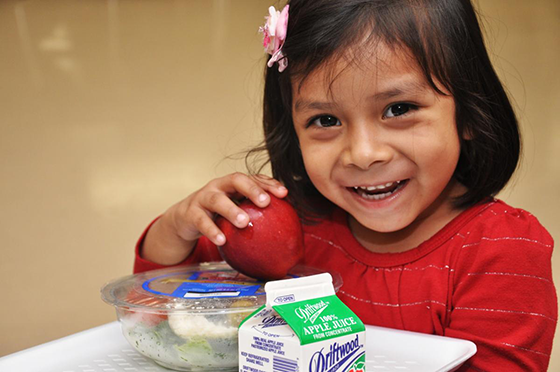Five Tips for Packing Healthy School Lunches
 It’s that time of year again—parents throughout the nation are once again thinking about what to put in their children’s school lunchboxes. It’s a balancing act to pack a lunch with healthy foods that our children will actually eat. We’re battling the influence of TV advertisements for processed foods and classmates whose lunches are not on the healthy foods spectrum. As parents, it can be a daily challenge to pack a lunch that makes everyone happy. Here is some advice from the health experts at NCLR.
It’s that time of year again—parents throughout the nation are once again thinking about what to put in their children’s school lunchboxes. It’s a balancing act to pack a lunch with healthy foods that our children will actually eat. We’re battling the influence of TV advertisements for processed foods and classmates whose lunches are not on the healthy foods spectrum. As parents, it can be a daily challenge to pack a lunch that makes everyone happy. Here is some advice from the health experts at NCLR.
- Include at least one serving of fruit or vegetable in every lunch. Try grapes, pears, melon, berries, apples, or pineapple. Fruits cut into slices, cubed, or with yogurt may be more appealing for children. Baby carrots, sliced celery, bell peppers, and cucumbers make excellent lunch sides. You can also sneak these vegetables and lettuce into sandwiches.
- Use whole grains and lean meats. Sandwiches are a popular and convenient choice for school lunches. They can provide children with at least 2–4 of the different food groups. When choosing bread, read the nutrition label to see if “whole grain” is the first ingredient listed or choose bread that is labeled “100% whole wheat”; white, “enriched,” and “refined” breads have little nutritional value. If the main flour listed on the label is “wheat” or “unbleached wheat flour,” the product is not whole grain. For protein, use lean luncheon meats, such as low-fat turkey breast, chicken breast, or ham. If you must add cheese, make sure it’s also low-fat. With peanut butter, opt for natural or a brand that has no additives, when possible.
- Follow the recommended portions for children. It can be confusing to figure out how much food your child is supposed to eat, especially when restaurants often present us with large portions that do not reflect dietary recommendations. The USDA is set to release their 2015 recommendations later this year. For now, check out these American Heart Association recommendations that promote heart health for different age groups.
- Be careful with added sugars and fat. Most of us, including children, consume more sugar than we should. An obvious tip is to limit cookies, snack cakes, doughnuts, brownies, and other sweet baked goods. Sweet baked goods are often packed with sugars, as well as saturated and trans fats. Remember that these are meant to be treats and consumed only in small portions, every once in a while—not every day. Sugar is also found in foods we often don’t think of as being “sugary,” such as juice. If you pack juice, make sure it’s 100 percent juice, which is not always the case with many of the popular juice drinks for children. Water is an even better choice. Milk is an excellent source of dairy, if you are mindful of recommended servings per day and choose low-fat or non-fat milk rather than whole milk, which has more fat and cholesterol.
- Include variety and start early. The key to providing children with good nutrition is to have well-rounded meals that include the various food groups. When it comes to fruits and vegetables, keep it colorful and strive to eat fruits and vegetables that represent a whole rainbow of benefits. Presentation matters, even for children, so get creative with designing fun and visually appealing meals and snacks. Remember to start early and introduce healthy foods as early as infancy.
Lastly, children often do as they see. As parents and adults, we are in the best position to model healthy habits. It’s never too late to improve our own health habits!
This blog post is part of Comprando rico y sano, a program supported by the Walmart Foundation and General Mills, Inc.
Keep up with the latest from UnidosUS
Sign up for the weekly UnidosUS Action Network newsletter delivered every Thursday.


